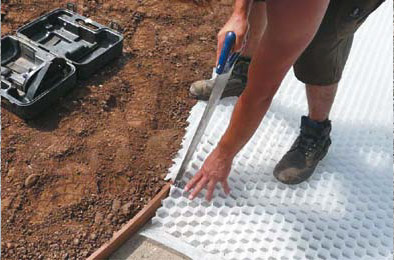Skip to content







GUIDE TO LAYING GRAVELFIX
In order to achieve a long-lasting and stable paving, GRAVELFIX gravel stabilizer, must be laid starting from a professionally created foundation.


1) Position and anchor the edgings to define the perimeter of the construction, contain the surface gravel and protect the outer edges of GRAVELFIX from lateral forces.

2) Compact the bottom of the area to make it even and avoid sinkings. It is recommended to use a final layer of well-pressed sand or fine gravels to create a homogeneous, solid and stable base.

3) Lay the Gravelfix panels on the surface without any anchoring, it is the weight of the gravel itself that keeps the grids firmly on the ground. The panels can be easily adapted to the shape of the project by cutting them with a knife or simply by scissors.

4) Fill the grates with chippings of your choice from the recommended sizes between 5 mm and 12 mm. Any decorative gravel and pebble is ideal for the construction of pedestrian and cycle paths, while for vehicular use it is mandatory to use aggregates with higher hardness such as granite, porphyry, basalt and generally aggregate products for making asphalt in order to avoid the excessive fragmentation of the aggregate itself.

5) Evenly fill the panels to form a layer of maximum 2 cm above the Gravelfix. As the final step, it is recommended to use a wheel paver in order to evenly press the surface, in any case it will settle with time.
